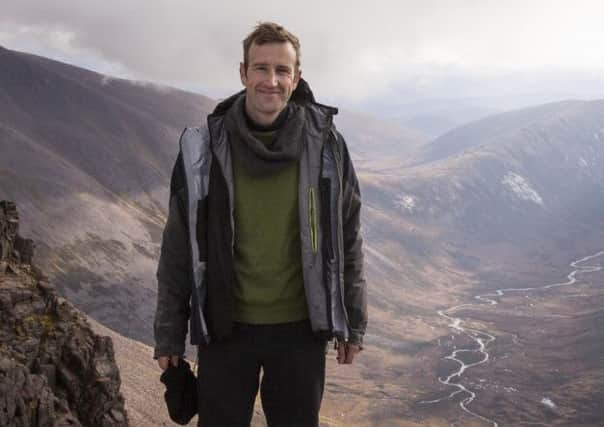Roger Cox: Nan Shepherd and the Cairngorms


“Yet again,” he wrote, “I’m reminded that when the apocalypse comes, I want to be in the stockade with cameramen and mountain guides (while the poets and academics perish in the fields beyond...)”
High winds, it seemed, had been a factor in the ordeal, but the details were sketchy, so I arranged to catch up with him at a later date to get the full story.
Advertisement
Hide AdAdvertisement
Hide AdIt turns out Macfarlane had been in Scotland filming The Living Mountain: A Cairngorms Journey – an exploration of these majestic hills filtered through Scottish writer Nan Shepherd’s cult book of the same name. The programme is due to air on BBC2 on 2 December.
“We really did steal the film from under the nose of winter,” Macfarlane says down the line from his home in Cambridge. “We got this unbelievable weather show – the Cairngorms at their volatile best – everything from whiteout mist to ice and hail coming in and then big, gale-force winds.
“We were camping at about 2,500 feet on the shoulder of Sron na Lairige, above the Lairig Ghru, and we got down at the end of the second day just as dusk was falling to find that the wind which had been pretty strong on the plateau had been funnelled by the Lairig Ghru and had just pancaked our tents – the whole camp was flat – so we had to pack up in the dusk and hump it all the way back down to Loch Morlich.
“Three days later it was hitting 100mph on the tops so it was completely impossible.”
The idea of the film was to travel through the Cairngorms just like Shepherd did in the 1940s when she wrote The Living Mountain, not simply bagging peaks, but focusing on some of the less obvious details of the landscape.
“There were two places in particular I wanted to get to,” says Macfarlane, “both of which were important to me and important to her. One was the Wells of Dee, which is not really one place but a thousand places, where the river springs from the plateau in this very unlikely sort of burst of life in that apparently very barren high Arctic tundra; and the other was Coire an Lochan, which anyone who knows the Cairngorms will know of but not that many people will have seen, because you can’t see it from the north, you can’t see it from above very easily – you have to seek it out under Braeriach summit.”
Nan Shepherd was born in 1893, and was a lecturer of English at Aberdeen College of Education for most of her working life. Although she wrote The Living Mountain in the 1940s, drawing on her solitary wanderings for inspiration, she chose not to publish it until 1977, shortly before her death in 1981. It’s unclear why she waited so long – perhaps because of the lukewarm reaction of the first publisher she sent it to, perhaps because the society of the time might not have been all that receptive to the idea of women getting closer to nature by bathing naked in mountain lochans – but it has gone on to become a cult classic all the same.
“It’s a book about a single place, a single region, but it’s also about the whole world really,” says Macfarlane, “because it’s about how we relate to the places we love and live in and move through. Nan loved wandering without intent, and the book is really an account of how she overcame what she called summit fever and instead began to develop a way of exploring – she called it ‘peering into nooks and crannies’. She became fascinated not by tops, but by cliffs and caverns and corries and caves and crags. So she swam in lochs and she peered between boulders. She changed the whole aim of being on the mountain by coming up with this wonderful idea of walking into the mountain, and that, for me... I’ve undergone a similar change, away from the charge for the summit towards a broader excitement.
“Peering and wondering and thinking become more important than the metrics of metres climbed and miles covered.”
• The Living Mountain: A Cairngorms Journey is on BBC2, 2 December, 10pm.